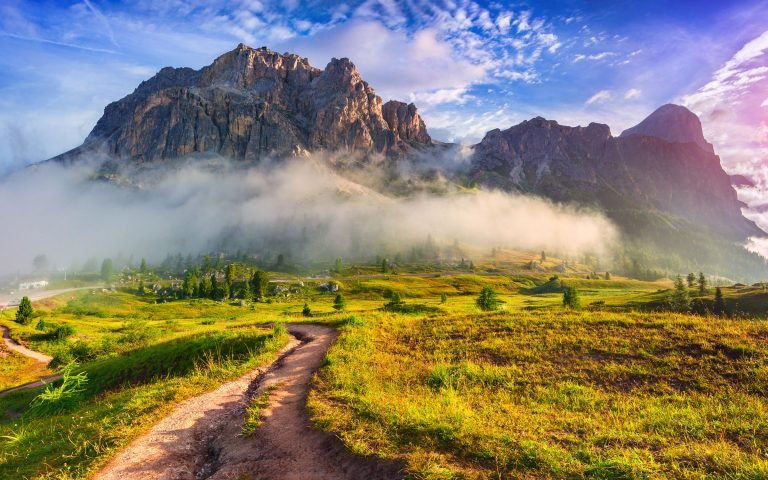In the tapestry of the world’s most remarkable natural landmarks, Mount Oeuvre stands out as a symbol of both ancient mystery and modern fascination. Nestled in the heart of an idyllic region, this majestic peak not only captivates with its breathtaking vistas but also holds deep cultural and historical significance. This article delves into the essence of Mount Oeuvre, exploring its geological formation, cultural heritage, and the experiences it offers to intrepid explorers and casual visitors alike.
Geological Marvel: The Formation of Mount Oeuvre
Mount Oeuvre’s story begins millions of years ago, during a period when tectonic forces sculpted the landscape in dramatic ways. This ancient peak is part of a range known for its unique geological formations, shaped by volcanic activity and erosion over eons. The core of Mount Oeuvre is primarily composed of volcanic rock, with layers of sedimentary deposits revealing a rich history of geological upheavals.
The mountain’s distinctive shape is a result of both volcanic eruptions and the gradual wearing away of softer rock layers by wind and water. The result is a rugged terrain with cliffs and deep ravines, offering both a challenge and a reward for those who venture into its depths. The diverse rock formations contribute to the mountain’s striking appearance and make it a fascinating subject for geological study.
Cultural and Historical Significance
Mount Oeuvre is not just a natural wonder; it is deeply intertwined with the cultural and historical narrative of the region. Indigenous peoples have long revered the mountain as a sacred site, imbuing it with spiritual significance. Ancient myths and legends speak of gods and spirits inhabiting the peak, and rituals performed in its shadow have been passed down through generations.
Archaeological evidence suggests that Mount Oeuvre has been a site of human habitation for thousands of years. Stone tools, pottery fragments, and ancient inscriptions found in the area provide insights into the lives of early settlers who once thrived in this challenging environment. These artifacts offer a glimpse into the mountain’s role as a source of sustenance and inspiration for its early inhabitants.
During the medieval period, the mountain gained prominence as a strategic location. Its commanding views made it an ideal vantage point for observing and defending against potential invaders. Fortifications and watchtowers constructed on the slopes testify to its strategic importance and the ingenuity of those who sought to harness its natural advantages.
Exploring Mount Oeuvre: A Traveler’s Paradise
For modern adventurers, Mount Oeuvre presents an array of opportunities to connect with nature and history. Whether you’re an avid hiker, a casual explorer, or someone seeking solace in the tranquility of the mountains, there’s something for everyone.
- Hiking Trails: The mountain boasts a network of hiking trails that cater to various skill levels. From gentle slopes perfect for leisurely walks to challenging ascents that test your endurance, the trails offer stunning views of the surrounding landscape. Along the way, hikers can encounter diverse flora and fauna, adding to the sense of immersion in nature.
- Cultural Experiences: To truly appreciate the cultural heritage of Mount Oeuvre, visitors can explore nearby museums and cultural centers. These institutions offer exhibits on the mountain’s historical significance and its impact on local traditions. Guided tours led by experts provide deeper insights into the myths and legends associated with the peak.
- Adventure Sports: For those seeking an adrenaline rush, Mount Oeuvre is a prime destination for adventure sports. Rock climbing enthusiasts can tackle its sheer cliffs, while paragliding offers a bird’s-eye view of the mountain’s grandeur. Winter sports enthusiasts will find opportunities for skiing and snowboarding on the snow-capped slopes during the colder months.
- Photography and Art: The mountain’s dramatic landscapes make it a haven for photographers and artists. The interplay of light and shadow on the rugged terrain creates captivating scenes that inspire creativity. Sunrise and sunset are particularly magical times to capture the mountain’s beauty, as the changing colors enhance its already awe-inspiring features.
Conservation Efforts and Responsible Tourism
As Mount Oeuvre continues to attract visitors from around the world, it is crucial to balance tourism with conservation efforts. The natural beauty of the mountain and its surrounding environment must be preserved for future generations to enjoy. Responsible tourism practices are essential in maintaining the integrity of the landscape and protecting its delicate ecosystems.
Local authorities and conservation organizations are actively working to implement measures that minimize the impact of human activity on the environment. This includes maintaining designated trails, enforcing regulations to prevent littering, and educating visitors about the importance of respecting wildlife and natural habitats.
Travelers can contribute to these efforts by following guidelines, such as staying on marked trails, carrying out all trash, and avoiding disturbances to wildlife. By being mindful of their impact, visitors can help ensure that Mount Oeuvre remains a pristine and cherished destination.
Conclusion
Mount Oeuvre stands as a testament to the grandeur of nature and the richness of human history. Its towering presence and multifaceted significance make it a destination of profound interest and beauty. From its geological formation to its cultural heritage, the mountain offers a unique blend of experiences for those who seek to explore its depths.
